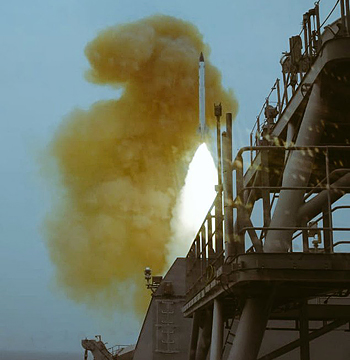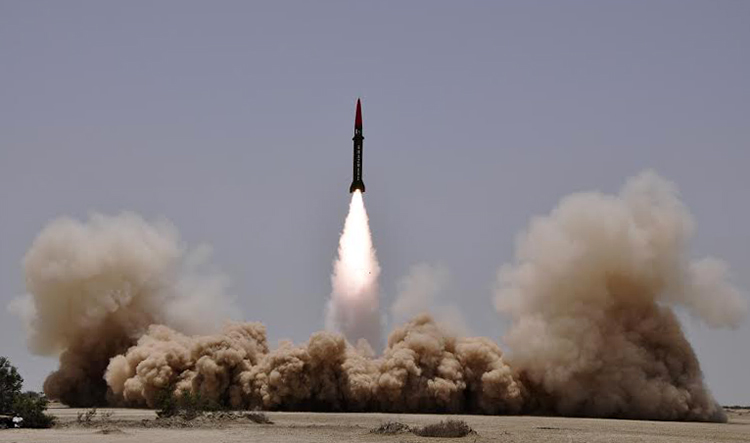INDIAN ARMED FORCES CHIEFS ON OUR RELENTLESS AND FOCUSED PUBLISHING EFFORTS

The insightful articles, inspiring narrations and analytical perspectives presented by the Editorial Team, establish an alluring connect with the reader. My compliments and best wishes to SP Guide Publications.

"Over the past 60 years, the growth of SP Guide Publications has mirrored the rising stature of Indian Navy. Its well-researched and informative magazines on Defence and Aerospace sector have served to shape an educated opinion of our military personnel, policy makers and the public alike. I wish SP's Publication team continued success, fair winds and following seas in all future endeavour!"

Since, its inception in 1964, SP Guide Publications has consistently demonstrated commitment to high-quality journalism in the aerospace and defence sectors, earning a well-deserved reputation as Asia's largest media house in this domain. I wish SP Guide Publications continued success in its pursuit of excellence.
- MoD initiates comprehensive review of Defence Acquisition Procedure 2020, pushes for defence reforms
- G7: The Swansong
- Kalinga Connect: South Asia to Polynesia
- Advanced MRSAM for India for a greater firepower
- Must Credit DRDO for Operation Sindoor, now what is next for defence R&D?
- Operation Sindoor | Day 2 DGMOs Briefing
- Operation Sindoor: Resolute yet Restrained
Naval Interceptor Missile
DRDO and the Indian Navy successfully conducted a maiden flight trial of sea-based endo-atmospheric interceptor missile
 |
The Author is Former Director General of Information Systems and A Special Forces Veteran, Indian Army |

On April 21, 2023, India entered an elite club of nations that possess the capability to fire a Ballistic Missile Defence (BMD) interceptor from a naval platform when it successfully carried out the maiden test of the weapon system. A statement issued by the Ministry of Defence said, “The Defence Research and Development Organisation (DRDO) and the Indian Navy successfully conducted a maiden flight trial of sea-based endo-atmospheric interceptor missile off the coast of Odisha in the Bay of Bengal on April 21, 2023. The purpose of the trial was to engage and neutralise a hostile ballistic missile threat, thereby elevating India into the elite club of nations having naval BMD capability.” Defence Minister Rajnath Singh congratulated the teams involved in the successful demonstration of the ship-based BMD capabilities. DRDO Chairman Samir V. Kamat said India “has achieved self-reliance in developing highly-complex network-centric anti-ballistic missile systems.”
India launched the BMD two-tiered programme after the 1999 Kargil Conflict with Prithvi missile-based Air Defence to intercept missiles at altitudes of 50-180 km in the first layer. The ‘Pradyumna’ interceptor has since replaced the Prithvi Air Defence BMD already. The second layer is the Advanced Air Defence system for low-altitude interceptions designed to intercept missiles at 15-40 km altitudes. The Prithvi Air Defence system was first tested in 2006, then making India only the fourth nation globally to have such capabilities, after the US, Russia and Israel. The Advanced Air Defence system was first tested in 2007. Since then, both systems have gone through successive and multiple rounds of tests and are now in the process of deployment.
India has been working to improve its ability to intercept enemy ballistic missiles both inside and outside of the atmosphere of the earth
India has been working to improve its ability to intercept enemy ballistic missiles both inside and outside of the atmosphere of the earth. The endo-atmospheric missiles are those that function within the earth's atmosphere and have a range of less than 100 km. Exo-atmospheric interception, on the other hand, is for destroying incoming enemy ballistic missiles outside of the Earth’s atmosphere at a higher altitude. The range of the interceptor missile tested was not announced.
India has already successfully demonstrated the land-based BMD system with the capability to neutralise ballistic missile threats, emerging from adversaries. In November 2022, the DRDO had successfully conducted the maiden flight test of Phase-II of the BMD interceptor, code-named AD-1 missile. AD-1 is a long-range interceptor missile designed for both low exo-atmospheric and endo-atmospheric interception of long-range ballistic missiles and aircraft. It is propelled by a two-stage solid motor and equipped with an indigenously developed advanced control system, navigation, and guidance algorithm to precisely guide the vehicle to the target.
The successful trial of AD-1 from both land-based and sea-based platforms would provide great operational flexibility to the Indian armed forces
The successful trial of AD-1 from both land-based and sea-based platforms would provide great operational flexibility to the Indian armed forces. India now possessed multiple options and the capability to engage incoming enemy ballistic missiles. The Indian BMD programme is aimed at providing a shield over its skies against all hostile missiles, including ones carrying nuclear warheads.

The BMD capability from a naval platform is an additional option at the hands of the Indian Armed Forces to intercept an incoming enemy ballistic missile, ensuring a full-spectrum counter capability. Essentially, this is to counter any attack that may take place on India’s strategic assets, even those that are at sea. The option would be exercised based on the priority and direction of the attack.
India faces threats of a ballistic missile attack (conventional and nuclear) from both Pakistan and China
India faces threats of a ballistic missile attack (conventional and nuclear) from both Pakistan and China. In addition to Abdali, Ghaznavi, Shaheen-I and NASR SRBMs, Pakistan has Shaheen-2 and Ghauri MRBMs that can reach India’s western coast and most of northern India. Pakistan is also developing the Shaheen-3 and Ababeel MRBMs but these are yet to be tested. China’s Rocket Force has a range of Dong Feng missiles covering ranges of 300-15,000 km. The Chinese PLA Navy is armed with the Submarine-Launched Ballistic Missile (SLBM) JL-2 having a range of 2,000 to 3,000 km which can be fired from underwater. India can now counter China’s JL-2SLBM with the successful interceptor test.
The indigenous Akash missile is part of the air defence systems of the Indian Armed Forces. The Russian S-400 Triumf missile air defence system is also in the process of induction. In 2021, the Indian Navy inducted INS ‘Dhruv’, a nuclear missile tracking warship.





